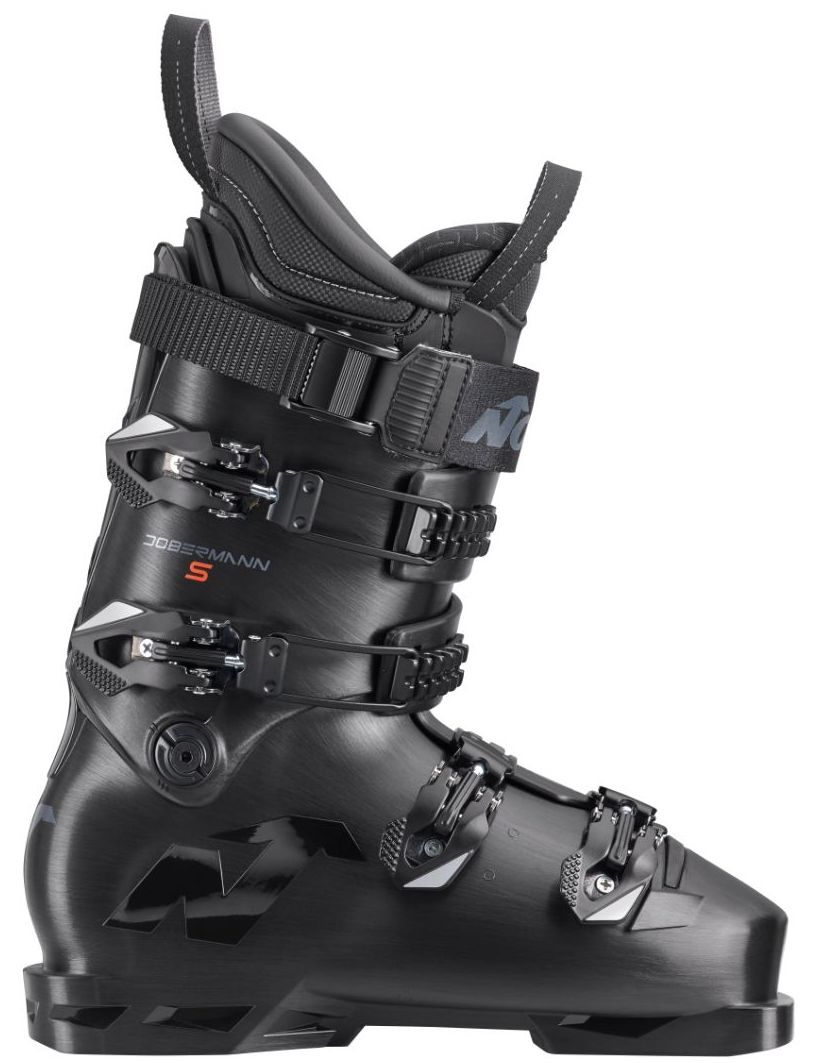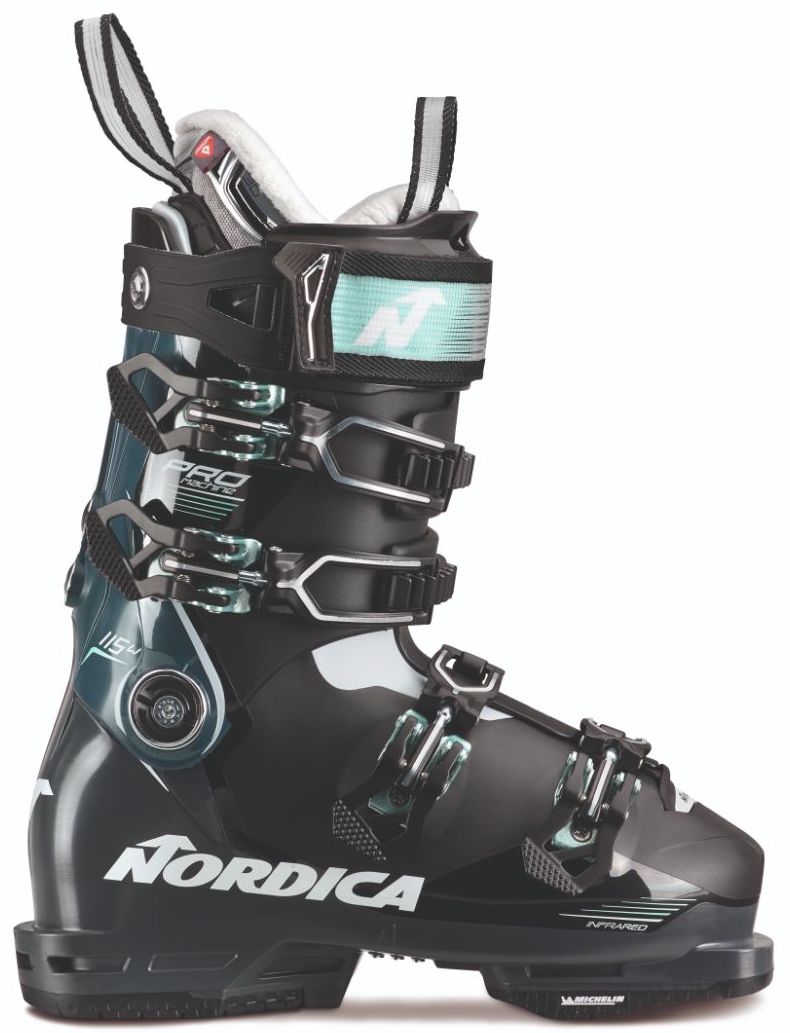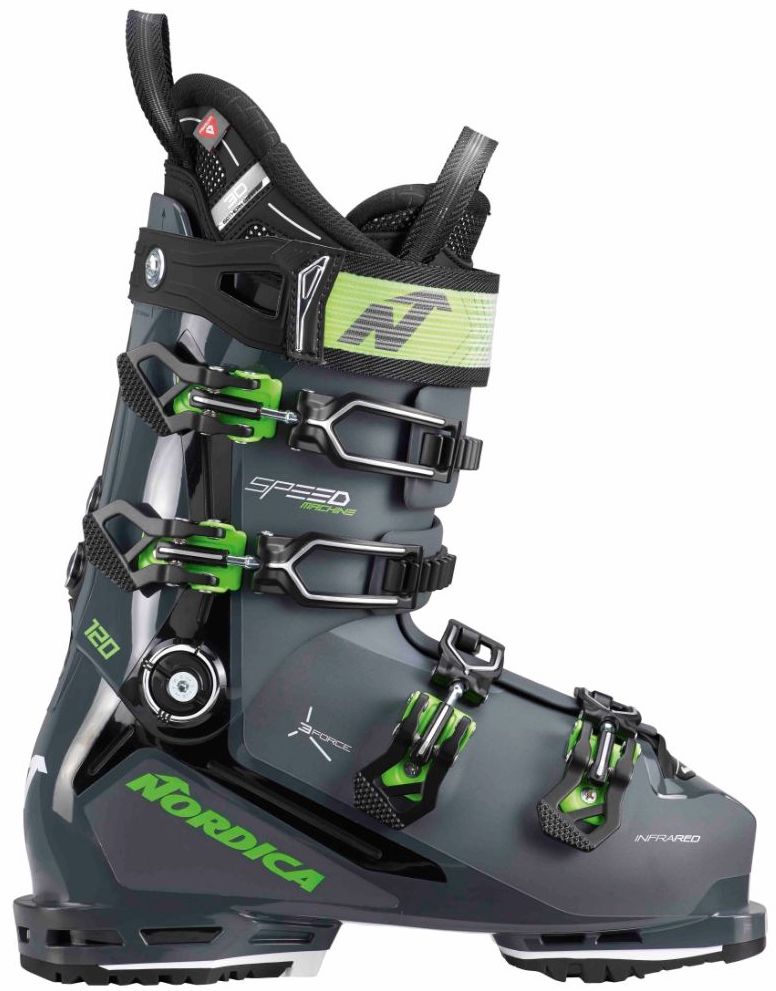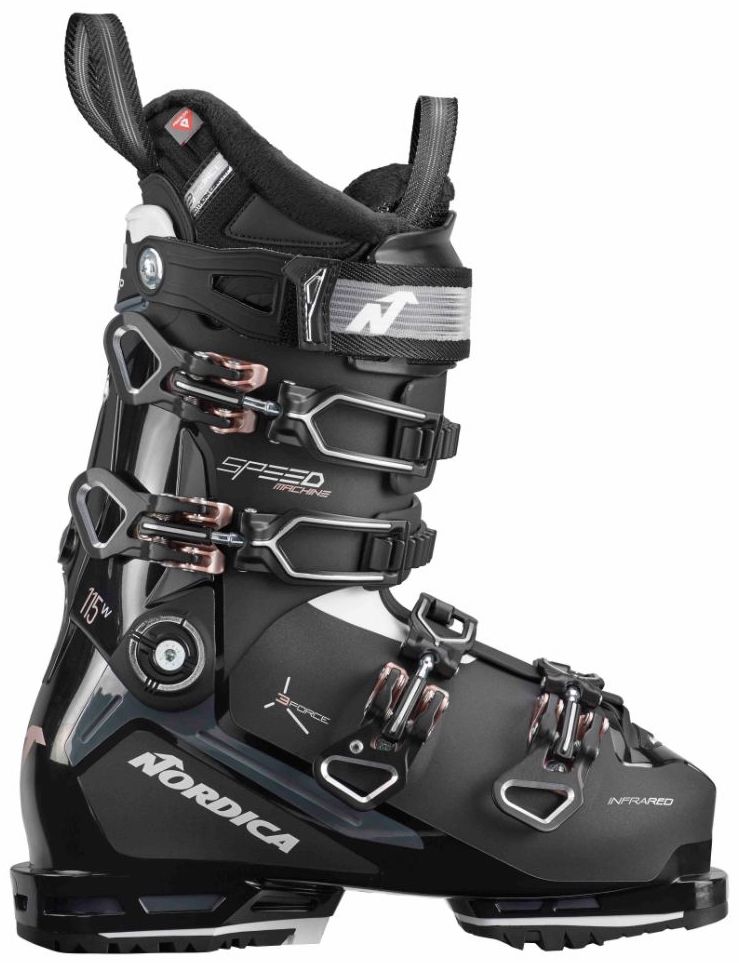No other leather boot maker profited more from the transition to injected plastic shells than Nordica. During most of the 1970’s and 80’s, Nordica’s unit share of the world market was so dominant the only competition was for second place. It responded to the surge in sales generated by Salomon’s wildly popular rear-entries by concocting a blizzard of convenient-entry alternatives populating every price point. By the close of the 80’s, almost all of Nordica’s line was made up of RE’s of one ilk or another.
When Nordica was sold to cotton sweater maker Benetton, it marked the beginning of the brand’s slide off its pedestal. Benetton drove the brand downward before selling it back at an eyebrow-arching loss to the Vaccari family who had owned it before Benetton’s disastrous stewardship. The rise back to relevance hasn’t been unperturbed, but by rebuilding its core line segment by segment, Nordica has returned to the first rank of boot makers. Its resurgence matters not just to the Tecnica Group that currently owns the brand, but to the ski trade at large. The ski industry fares better as a whole when its marquee brands excel.
Nordica’s renaissance in the recreational boot market began eight years ago with the introduction of a new boot with an old name, Speedmachine. The new Speedmachines were (and remain) classic, 4-buckle overlaps with a generous, medium volume (100mm) shell and saleable features such as moldable shells and cork-covered liners. Most importantly, the out-of-the-box fit was luscious, rendering modifications mostly moot. Speedmachine spawned the wide-lasted (102mm) Sportmachine six years ago and in 2019 the final shoe in the series dropped with the debut of Promachine.
While it’s fair to say Sportmachine is a wider version of Speedmachine, Promachine is more than just a narrower one. Speedmachine is aimed squarely at the middle of the market; Promachine intends to attract a better class of skier. (It’s an elitist sport, what can I say?) All the comfort and customization features are retained in the Promachine, but the 98mm-lasted liner is more accurate and the shell delivers steering power on a par with 130-flex race boots. Race boots don’t have Gripwalk soles, however, which are standard on the Promachine 130 and available for Speedmachine and Sportmachine models. For all-terrain, recreational skiers, Gripwalk is a more convenient option.
All three Machine lines include a full complement of women’s models with women-specific cuffs and liners. All women’s models (and most of the men’s) use Primaloft® insulation to keep tootsies warm and dry.
Six years ago, Nordica returned from a several season sabbatical from making a hike-mode (HM) boot when it unveiled the results of its research, Strider. Strider models delivered outstanding downhill performance in a four-buckle boot with all the requisite HM elements: skeletal buckles, a huge 46o ROM in hike mode and Grilamid® for the minimal mass hauling one’s butt uphill requires. The heavily treaded sole was developed in collaboration with Michelin, so you know it has some serious traction. For 2021, the Strider Pro 130 was joined by lighter weight clone, the Strider Elite 130, which tipped the scales at 1790g (26.5) versus the Pro’s 1910g.
But it isn’t the Striders’ uphill features that grabbed one’s attention, but the accurate fit of its 100mm last and most of all, the ski-ability. The Strider models were top-notch shoes for their ascent properties, but you’re reading about them here because they were in the first rank for downhill performance. In 2024, Strider retired to make room for a much more hike-focused design, Unlimited, that can be skied in-resort but which is clearly meant for self-propelled uphill travel. We expect the Unlimited’s vast improvement as a backcountry boot will improve its appeal among the many hybrid models currently cluttering the market.
Anyone who races knows that Nordica doesn’t need to inflate its resume to establish its credibility in this domain. Great racers of a bygone generation hoarded secret stashes of the venerable Grand Prix, and if Nordica ever stops making their Dobermann line of undiluted race boots, they’re also likely to be black market booty the instant they’re officially retired. With the arrival of Promachine, Dobermann spin-offs like GPX became redundant, but Dobermann World Cup boots aren’t going anywhere. In fact, the Dobermann collection has undergone a complete re-design for the 2024 season; we’ll divulge the details momentarily.
Having rejuvenated its core collection over a five-year rollout, Nordica didn’t mess with its success in 2021. It left most of its line intact, with one notable addition: the return of a rear-entry boot after abandoning the concept a quarter of a century ago. The HF series is currently comprised of seven models, four men’s and three women’s, two with built-in heaters. The last is wide (102mm) and the flex is soft (85), so it’s clear high performance isn’t the prime objective; rather, it’s the ability to slip it on and off that’s the HF’s (for Hands Free) calling card. If your ankle range of motion is kaput, the HF design will let you keep skiing, a blessing for those who need all the help they can get putting their boots on.
As noted above, Nordica’s renaissance began with the Speedmachine series that debuted 8 years ago, which means Nordica was working on the Speedmachine 3 series for six years preceding its launch two years ago, and the extra time spent on R&D shows in a much-improved product. The Speedmachine 3’s 3Force Technology liner and shell achieve a better integration of skier, liner and shell in a lightweight, soft-flexing shell in a medium last. Even the stiffest components of the 3Force frame are molded in a honeycomb to reduce weight. The liner and tongue represent considerable upgrades over the first generation, with an EVA insert in the ankle area and an adjustable tongue. Gripwalk soles are standard, of course.
A mere recitation of features doesn’t do justice to the instantly better-fitting Speedmachine 3 design and its vastly improved on-snow performance. The new boots are much more accurate in every respect, without over-serving the recreational skier for whom they’re designed.
For the 22/23 season, Nordica applied the same treatment to its entire Speedmachine clan and its wide-lasted (102mm) Sportmachine 3 collection. These are important model renovations, as the lower price points served by the Speedmachine 3 110, 100, 95W and 85W mean lower skill skiers won’t have to settle for a mediocre fit and meh performance. The Sportmachine 3 upgrade also benefits a long-neglected skier type, those lads and lasses with large feet. High-volume boots are often cavernous, shapeless arenas; Sportmachine 3 retains the accurate fit of the Speedmachine 3’s, just modeled on slightly larger dimensions.
The arrival of Sportmachine 3 signaled the completion of a design cycle that began with the first Speedmachines 8 seasons ago. To kick off a new launch cycle that will consume most of the next decade, it’s only fitting that Nordica chose as its avatar of change its flagship race-boot collection, Dobermann.
The changes to the new Dobermanns are substantial, starting with shortening the shell by 5mm – a country mile in a race boot – and generally shrinking the critical area around the heel and mid-foot. The new ISO 5355 sole shouldn’t need grinding, and – hold onto your hat – after over a decade of resistance, Nordica is finally using Mondopoint sizing for the Dobermann series.
Making the most important part of the shell structure more anatomical isn’t the only change of consequence; the cuff adopts the Tri-Force construction developed for the Machine lines, and the liner benefits from a patented connection between a band stitched to the back of its spoiler and a lacing system. Called Heel Link, it effectively tightens the liner in all directions, for unreal support and response.
One peculiarity of the new Dobermanns is the omission of a flex index on any of the models. Anyone serious about a race boot shouldn’t let this oddity deter him or her, as relative differences in flex among the eight adult models is easily deciphered. To top off its race-ready embellishments, the wide power strap has been elasticized, for optimal flex and rebound. The new Dynamic Power Strap is modified to match the precise – albeit unquantified – flex behavior of each model.
Put them all together, and that’s a lot of new features on a model line that has been around for over a quarter of a century. You have to hand it to Nordica’s R&D team for proving that it’s still possible to make substantive changes to the classic, 4-buckle, 2-piece boot that improve its most fundamental qualities of flex, fit and responsiveness.




